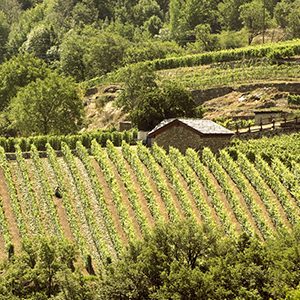
The Val D’Aosta - The Aosta Valley
The Val D’Aosta is the smallest Italian region. Aosta the capital has about 35,000 inhabitants; the region has a population of 125,000. The Val D’Aosta region is bordered by Switzerland on the North, byPiedmont on the Southern and Eastern sides and on the West withFrance. The Valley of Aosta is surrounded on three sides by the Alps and located at the slopes of Monte Bianco, Monte Rosa, il Cervino – the Matterhorn-and the Gran Paradiso. The official language is Italian; the dialect Roman-Provencal is spoken in Val D’Aosta and parts of Piedmont. Under the Mount Blanc a road tunnel 7.25 miles long, linking Val D’Aosta to France, is a great architectural and engineering accomplishment and an advantageous project to help the commerce between Italy and France, shortening the journey in miles and in time.
Tourism is one of the most important contributors to the economy of Val D’Aosta: Cervina, Gressoney, Courmayeur are well-known and excellent places where winter sports are offered. In the other seasons the region offers to the tourists spectacular landscapes, with unforgettable sceneries, mountains with the tallest peaks in Europe, rivers with abundant fishing, tourist guides to help and arrange mountain climbing and a complex of first class hotels, thermal baths, golf courses, first class international restaurants and most of all, the friendly hospitality of the local Valdaostani. Agricultural has been at the base of the local economy. Corn, cabbage, potatoes, fruits and grapes to make wine are cultivated for local consumption and shipped to markets. Fodder is produced and utilized for the dairy herds: the milk is used to produce the famous Fontina cheese, exported all over the world. The production of hydroelectric power has sponsored the woodworking and metal industry.
The cuisine Valdaostana is of country origin. The main ingredients are the areas’ harvest: cabbage, polenta, mushrooms, peas, potatoes, pork and pork products, the famous Jambon de Bosses, cured pork produced in the San Bernardo Valley, game and fish like trout, eels, trout-salmon and carp. The restaurants offer the same dishes found in the Piedmont eateries, homemade food is prepared in small establishments and in some restaurants trying to revive the traditional country cooking. The zuppa Valpellinetze is made with cabbage sautéed in butter, stewed with beef broth served on top of stale bread and aromatized with nutmeg. The Lasagna Valdostana is made with egg noodles layered with peas, mushrooms, pancetta, Italian bacon, sautéed with garlic and oil, covered with a buttery sauce and Parmesan cheese.
Game is stewed with wine or vinegar, aromatic herbs and mushrooms or other vegetables. Polenta concia made with butter and Fontina cheese, potato dumplings, la Carbonada beef cooked in wine with bacon, lots of butter, nutmeg, and cinnamon, served over polenta. Pork, sausages and other fish dishes are part of the Valdaostan menu’. The delicious black bread, pane nero is baked with rye and wheat, also made in an amiable version with raisins, walnuts or fennel seeds. TheCogne soup, made in the homonym village, is a risotto, the Cogne cream is a smooth, rich, chocolate dessert similar to a mousse fortified with rum and served with the tegole. Tegole are round thin biscuits made with hazelnuts, almonds, flour and butter. Another well-liked dessert are pears cooked in honey. Coffee is often served with grappa.
The region produces quality wines in small quantities. Among the whites the Valle d’Aosta Pinot Grigio and Pinot Bianco, the Muller-thurgau the Blanc and the Spumante de Mergex and La Salle; the redsVal d’Aosta Gamay, Petit Rouge, Pinot Noir, Rosso, and the better known Arnad-Motjovet, Enfer d’Arvier, Nus Rouge, Chambave Rouge, Donnas, Torrette and the sweet Muscat produced by most of the wineries. A premium grappa is distilled in Val d’Aosta along with the Genepi Liquor, made with the golden buds of the genepy plants, the Artemisia, the mutellina and the glacialis: these herbs grow wild in the high elevation of the western Alps.
